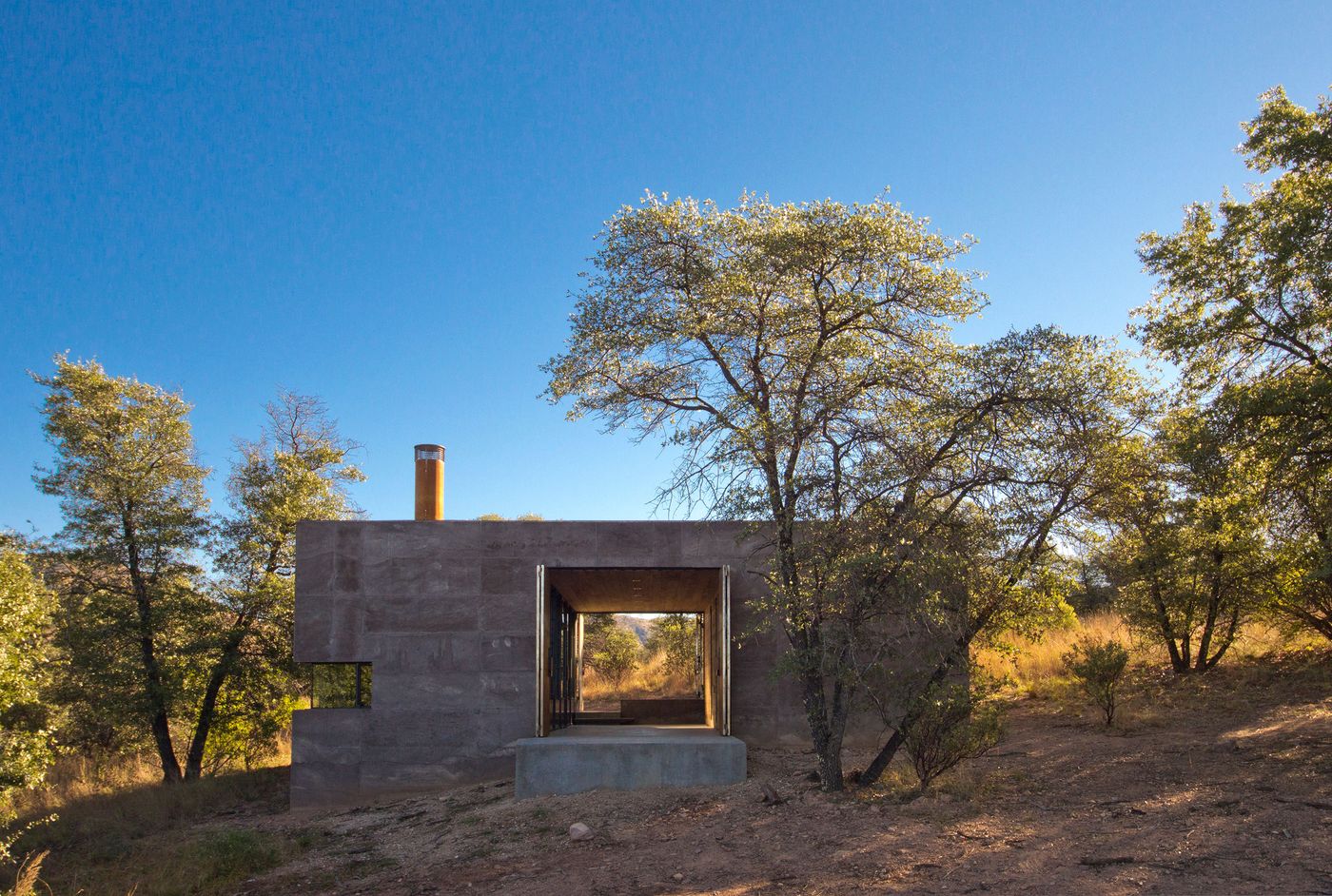
Off-Grid in Arizona: Casa Caldera by DUST Architects
Words by Eric David
Location
San Rafael Valley, Arizona, United States
Off-Grid in Arizona: Casa Caldera by DUST Architects
Words by Eric David
San Rafael Valley, Arizona, United States
San Rafael Valley, Arizona, United States
Location
The remote landscape of Southern Arizona’s San Rafael Valley, a rolling expanse of grass-covered alluvial hills peppered with Emory oaks and manzanitas, although quite picturesque, seems quite inhospitable to build a house on, but Tucson-based architects DUST did just that. Taking advantage of local building techniques and materials, Casa Caldera discretely springs up from the landscape, built as a refuge of vernacular domesticity amid a setting of beautiful wilderness.
The design of the house was informed by both the climatic conditions and the region’s geology—the basin was formed by significant volcanic activity some million years ago—as well as its location 15 miles from the Mexican border. With illegal immigrants crossing the border on foot and hunters scouting the range, the brief demanded a structure impenetrable to trespassers as well as one that would withstand the extreme temperatures of the valley while being energy efficient and environmentally friendly.
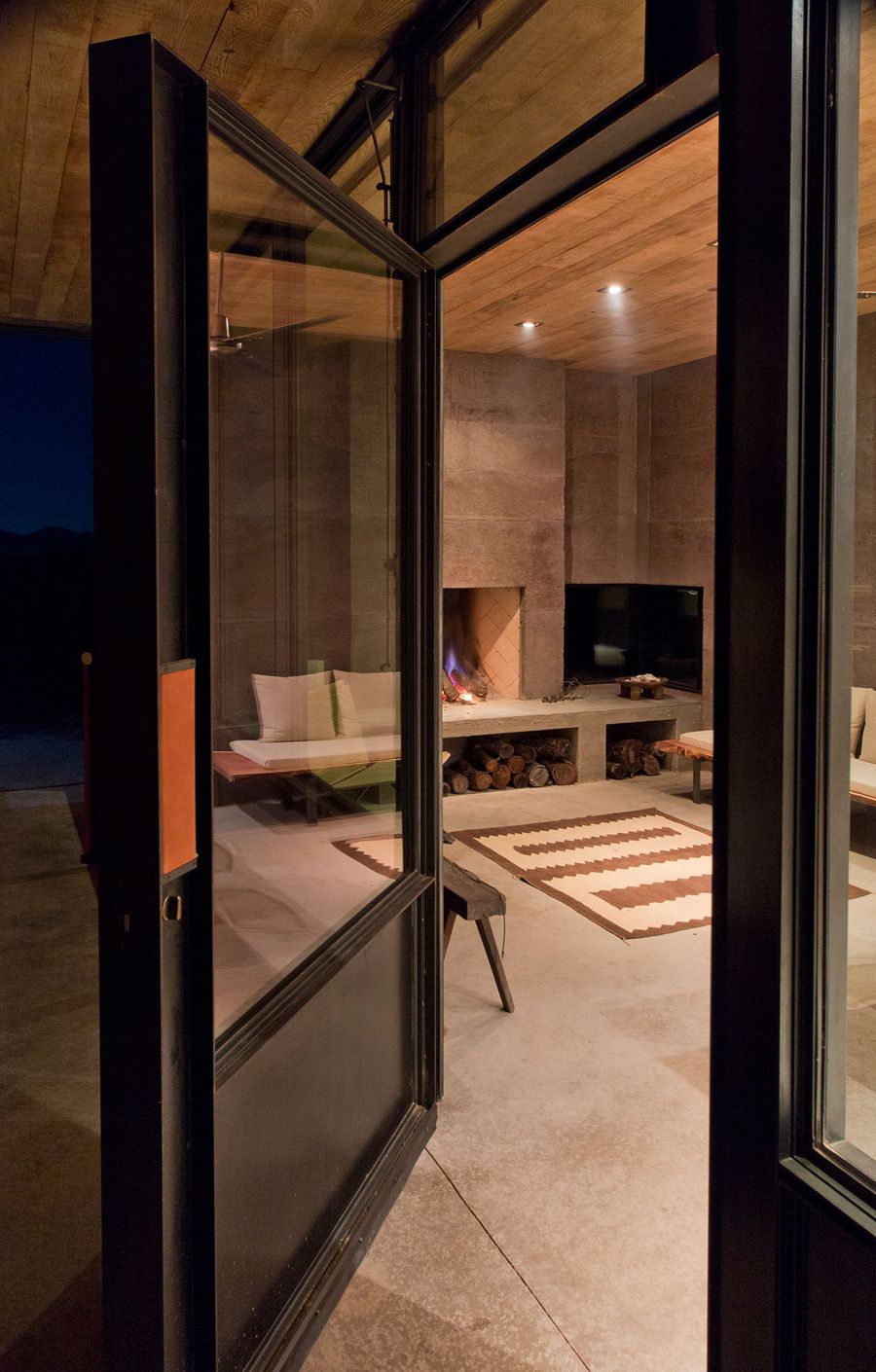
Photo by Cade Hayes.
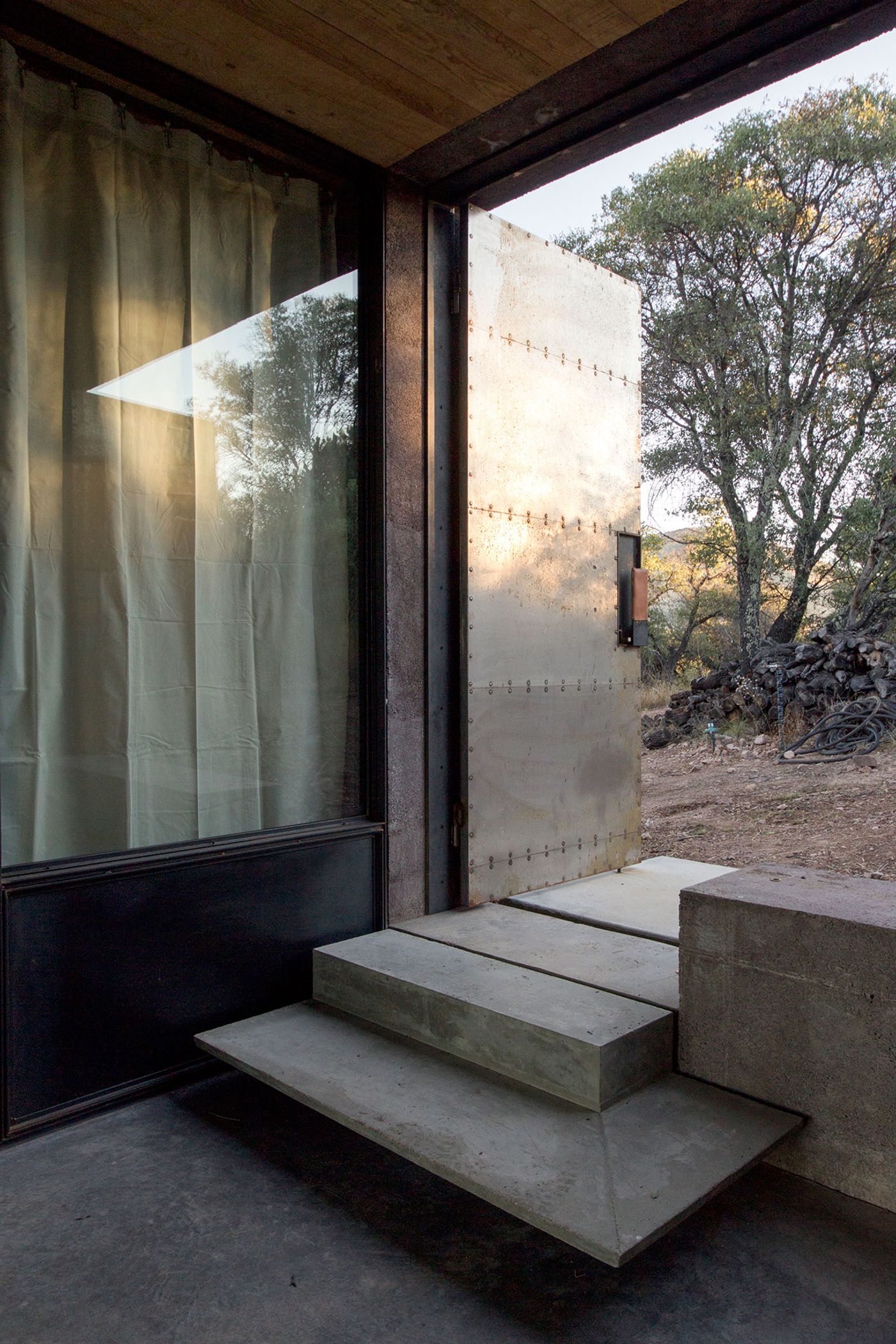
Photo by Cade Hayes.
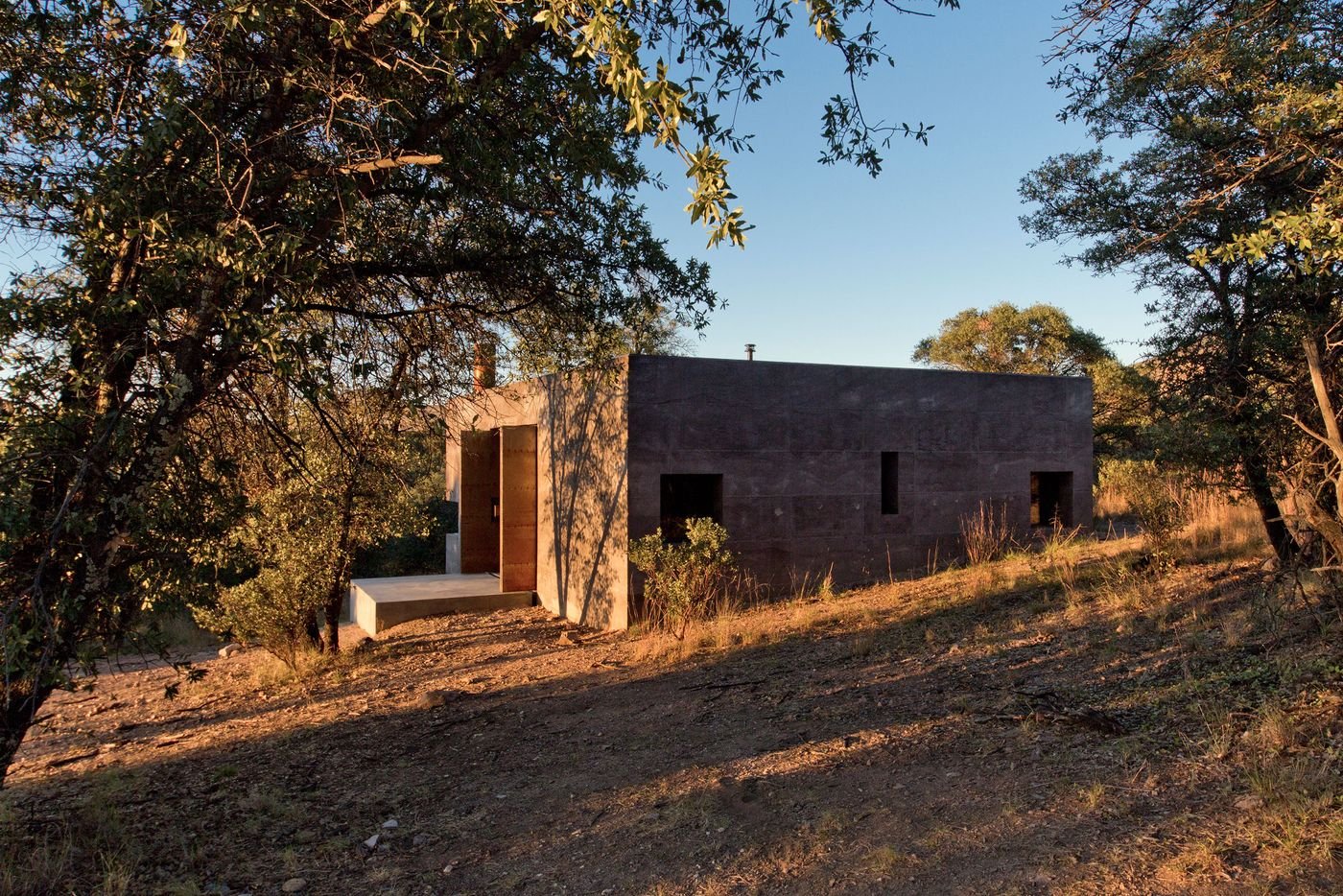
Photo by Cade Hayes.
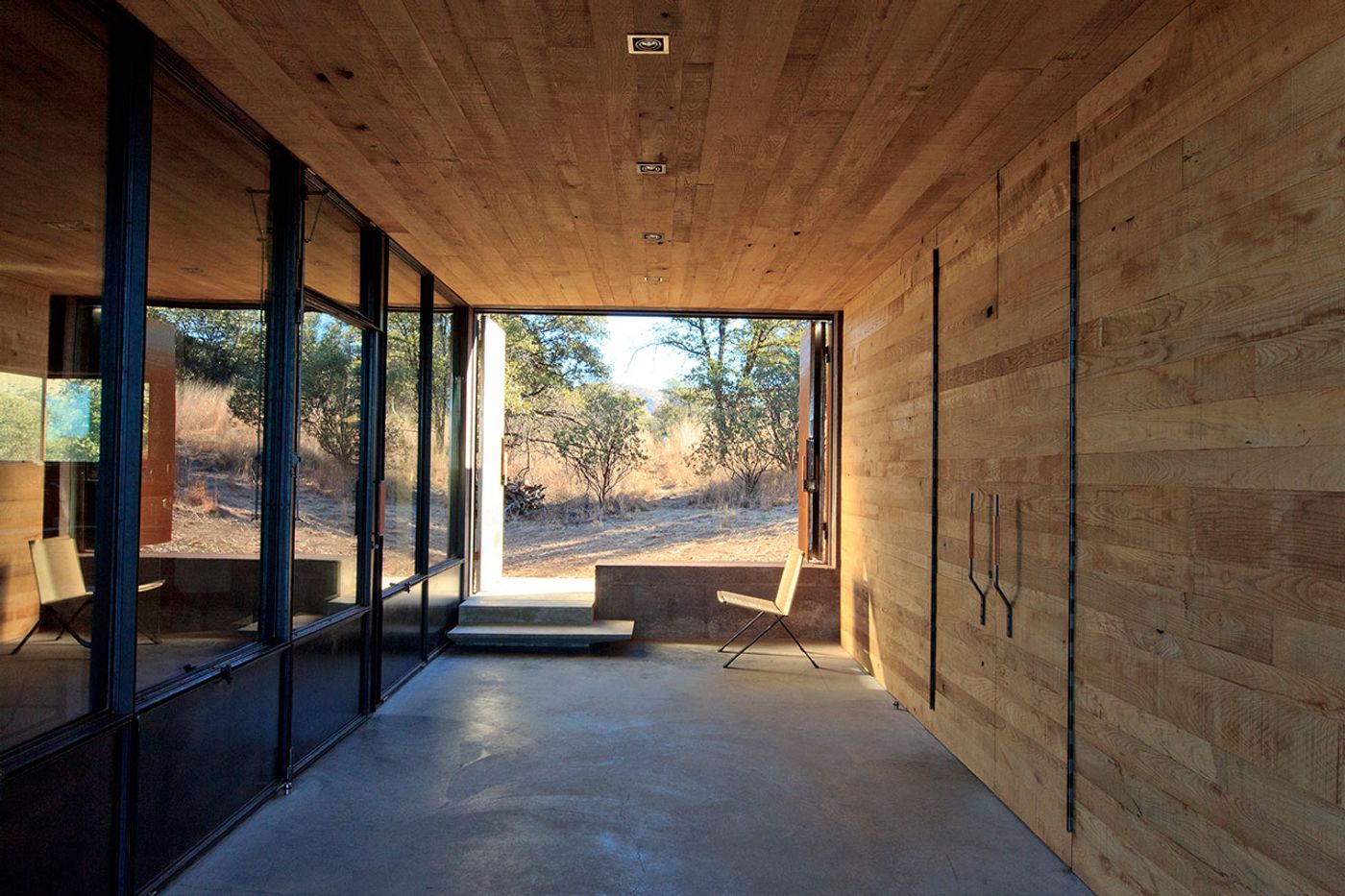
Photo by Cade Hayes.
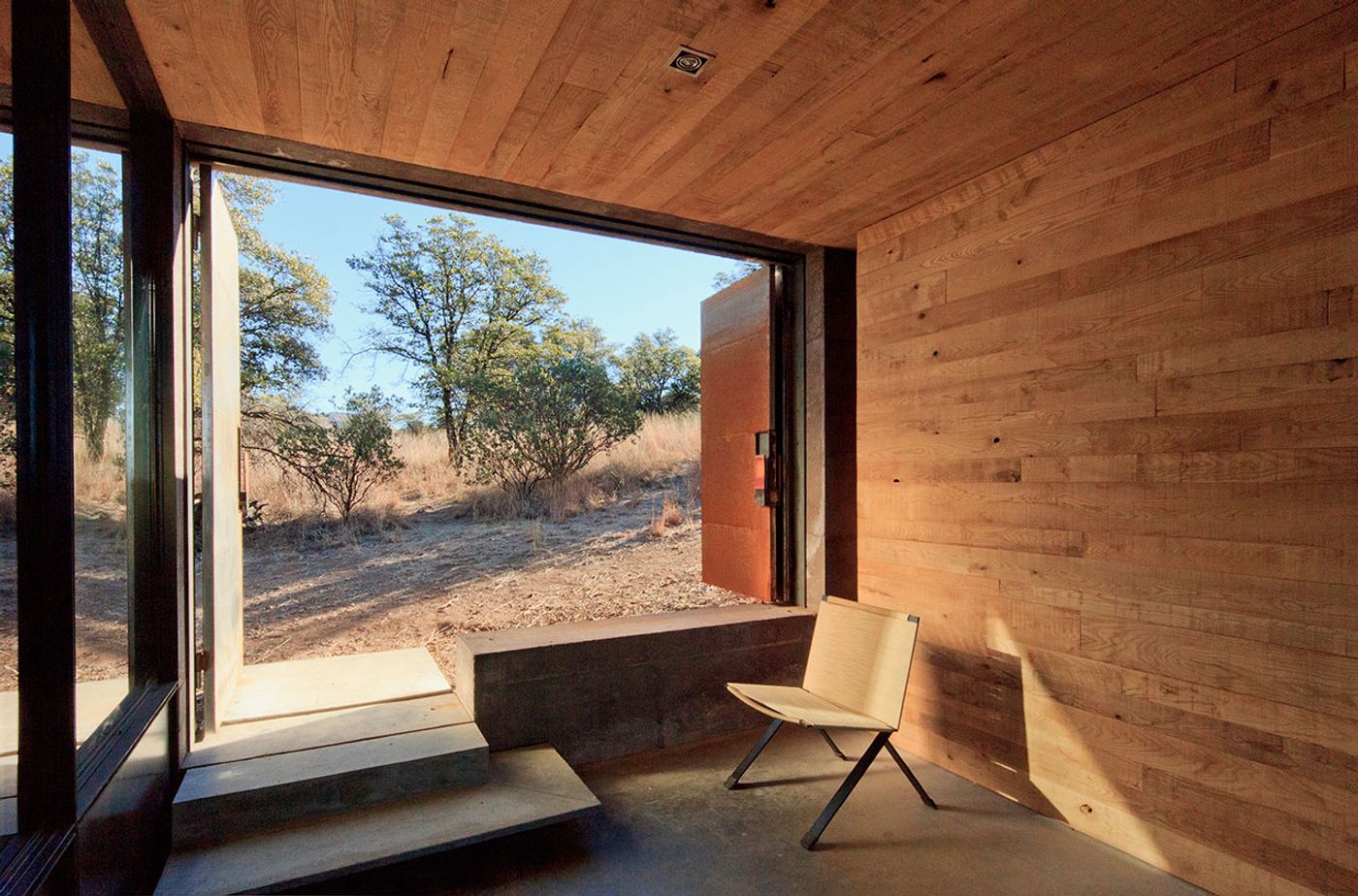
Photo by Cade Hayes.
Constructed from poured lava-crete—a dry cement that contains lightweight red-colored volcanic rock—the building features mass half a meter thick walls that provide excellent insulation from both the summer heat and the freezing temperatures of winter nights, while perfectly blending into the surrounding landscape, making the structure undetectable from a distance.
Exemplifying a local housing typology, the building, which is cubic in shape, is divided into three rectangular zones of 25 square meters, with a living area and two bedrooms located on either side of a zaguan, a type of hallway. Shielded on both ends by large bi-folding steel doors, the zaguan serves as an outdoor living space during the day when the doors are open, while at night, when they are closed, the house is transformed into a fortress. As the building’s windows are by design quite small in size to minimize direct solar heat gain in the summer, the zaguan is also the main source of natural light when it’s opened up during the day also allowing for cross ventilation for passive cooling.
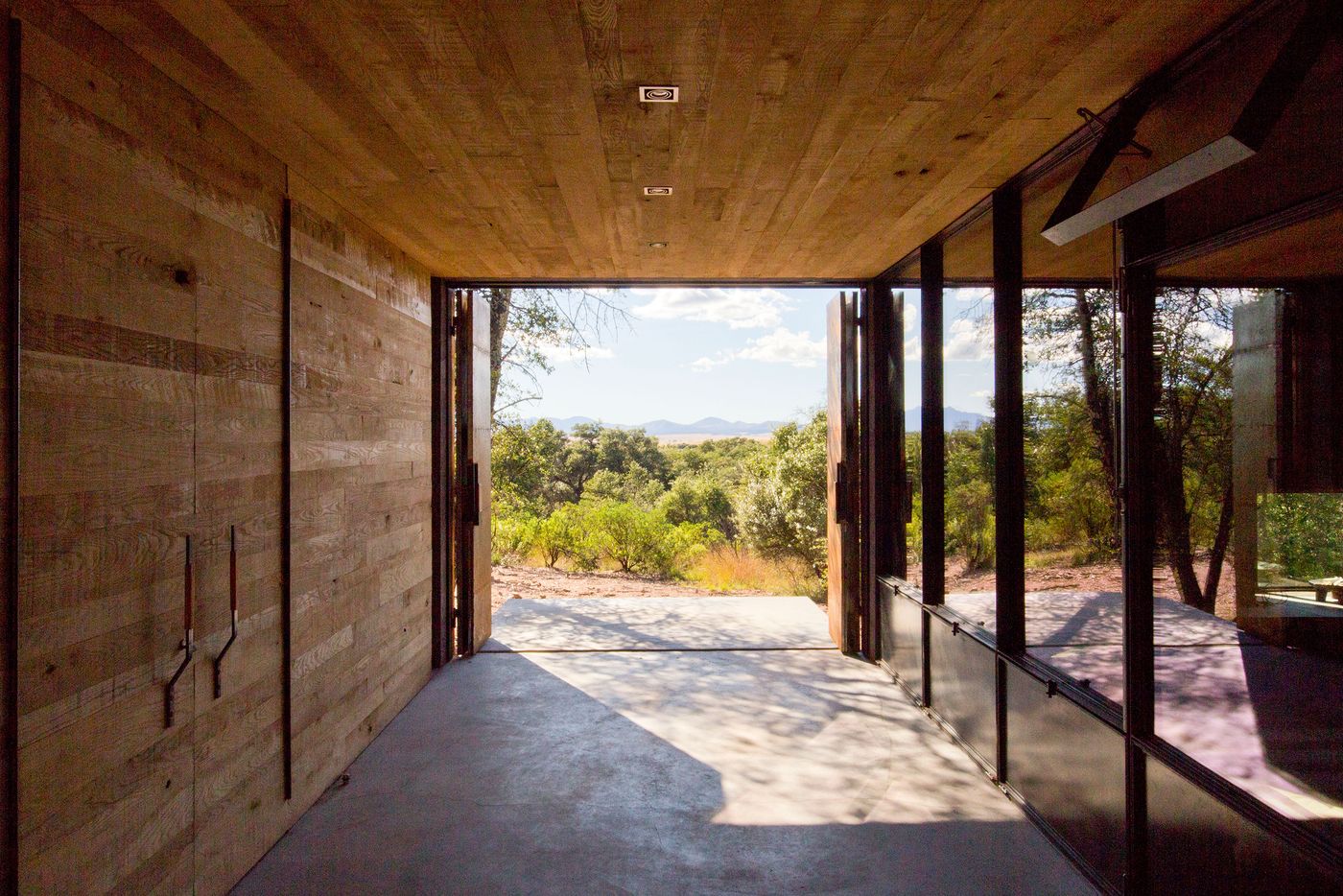
Photo by Cade Hayes.
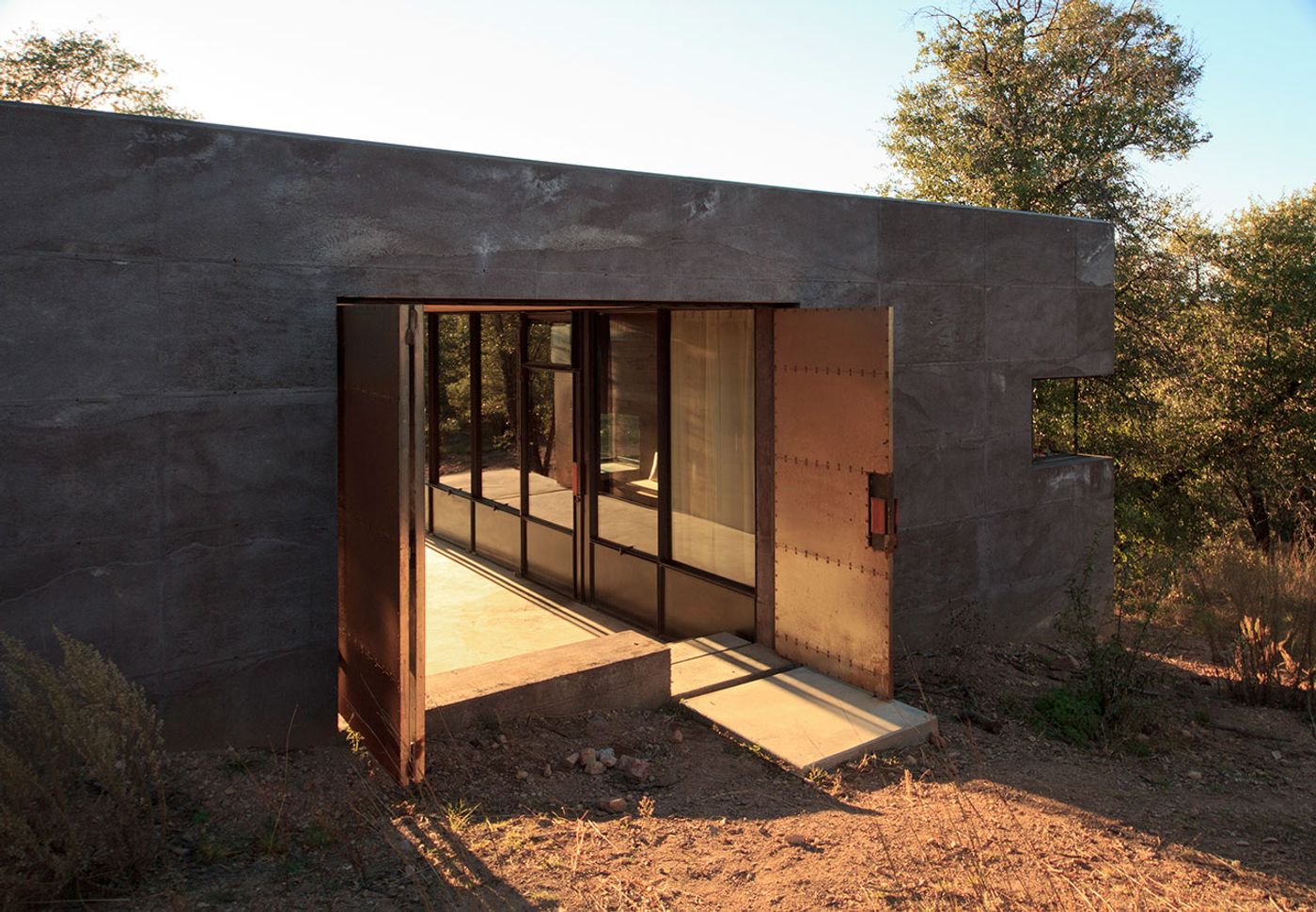
Photo by Cade Hayes.
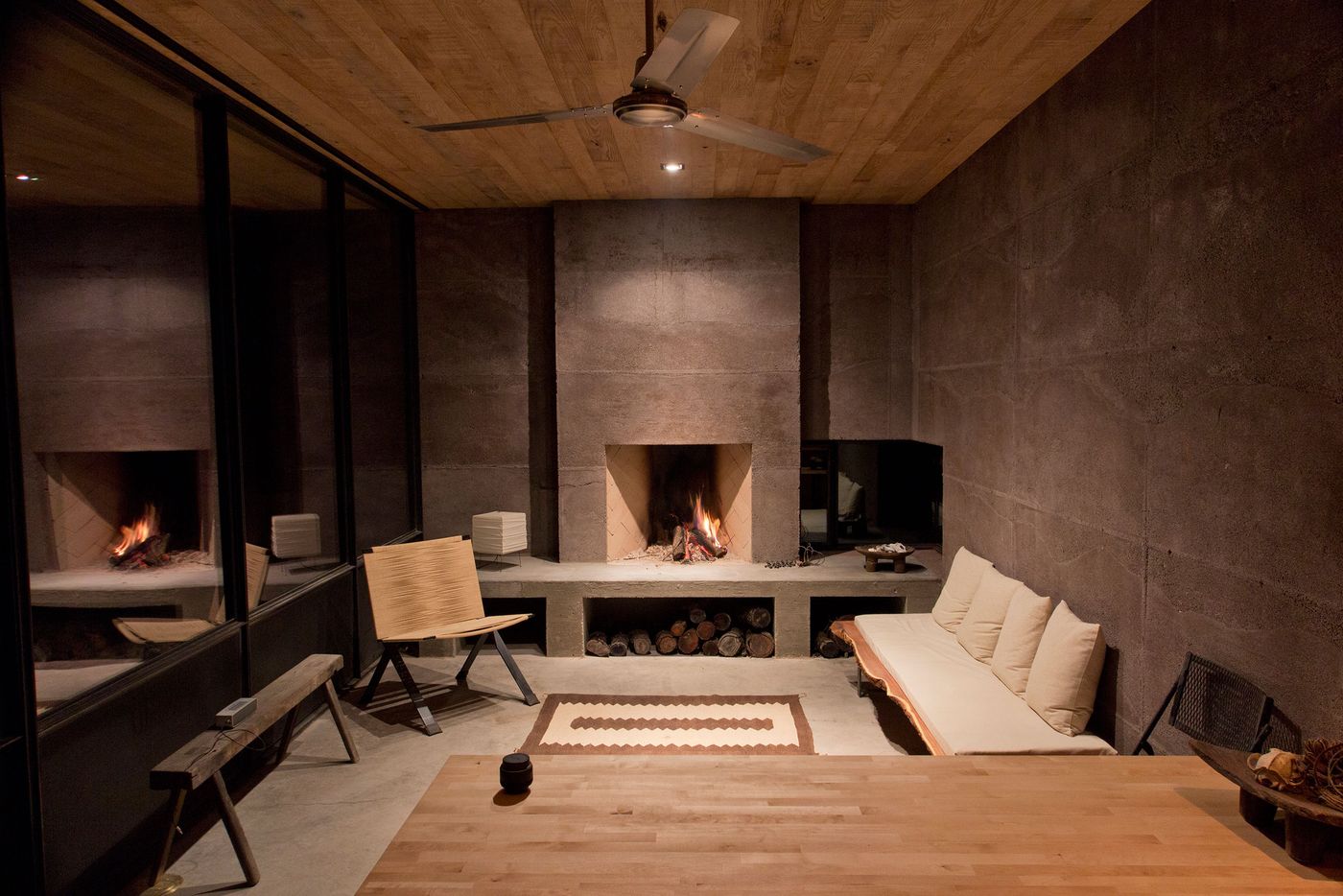
Photo by Cade Hayes.
For the interiors, the architects have opted for a minimal aesthetic of exposed volcanic cement for the walls and floors, and reclaimed sassafrass wood for the ceilings as well as for the built-in closets that separate the bedrooms from the zaguan, while most details such as window casings, door handles and leather pulls are custom built.
As Casa Caldera is entirely off-grid, power is provided by a small solar system as well as a propane gas generator that is used for cooking, water heating and refrigeration. Water is sourced from a local well while space heating is provided by a wood burning stove for the bedrooms and the zaguan and a fireplace for the living room. Equipped with low energy LED lighting and with no need for active cooling, the house’s energy requirements are minimal, as has been the case for several millennia of human habitation in the region, but without depriving its occupants of the modern-day comforts they deserve.
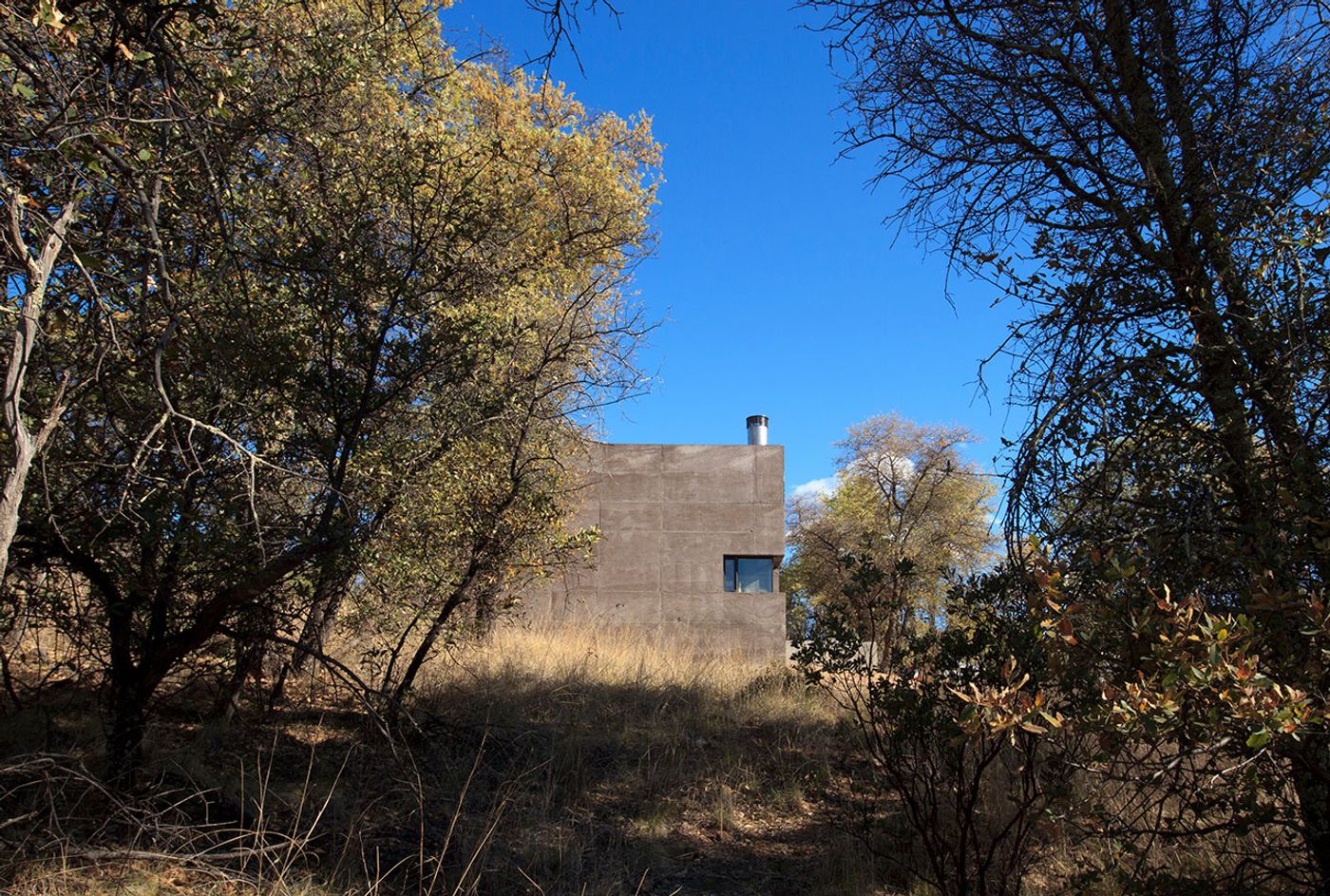
Photo by Cade Hayes.

Photo by Cade Hayes.
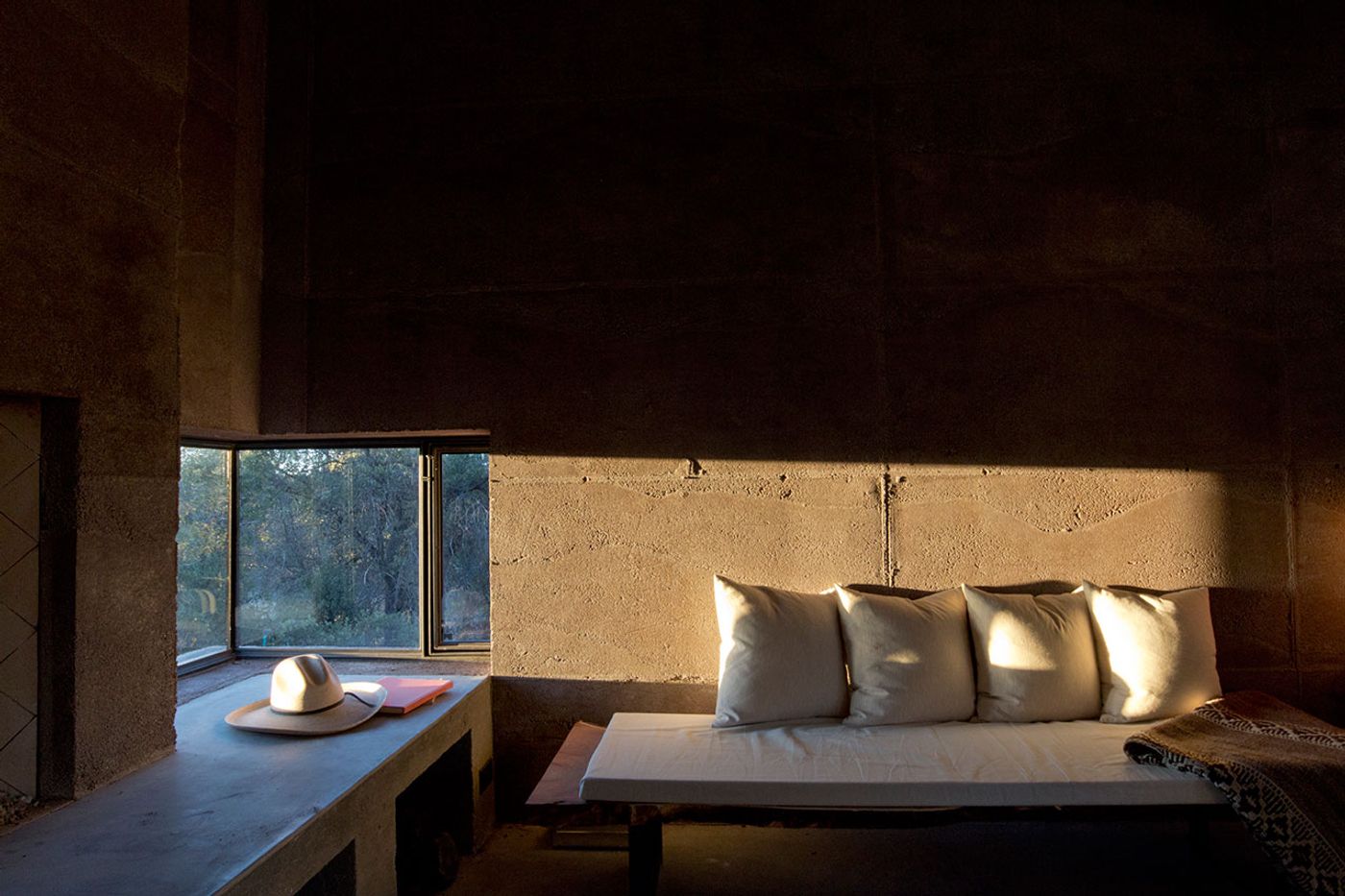
Photo by Cade Hayes.
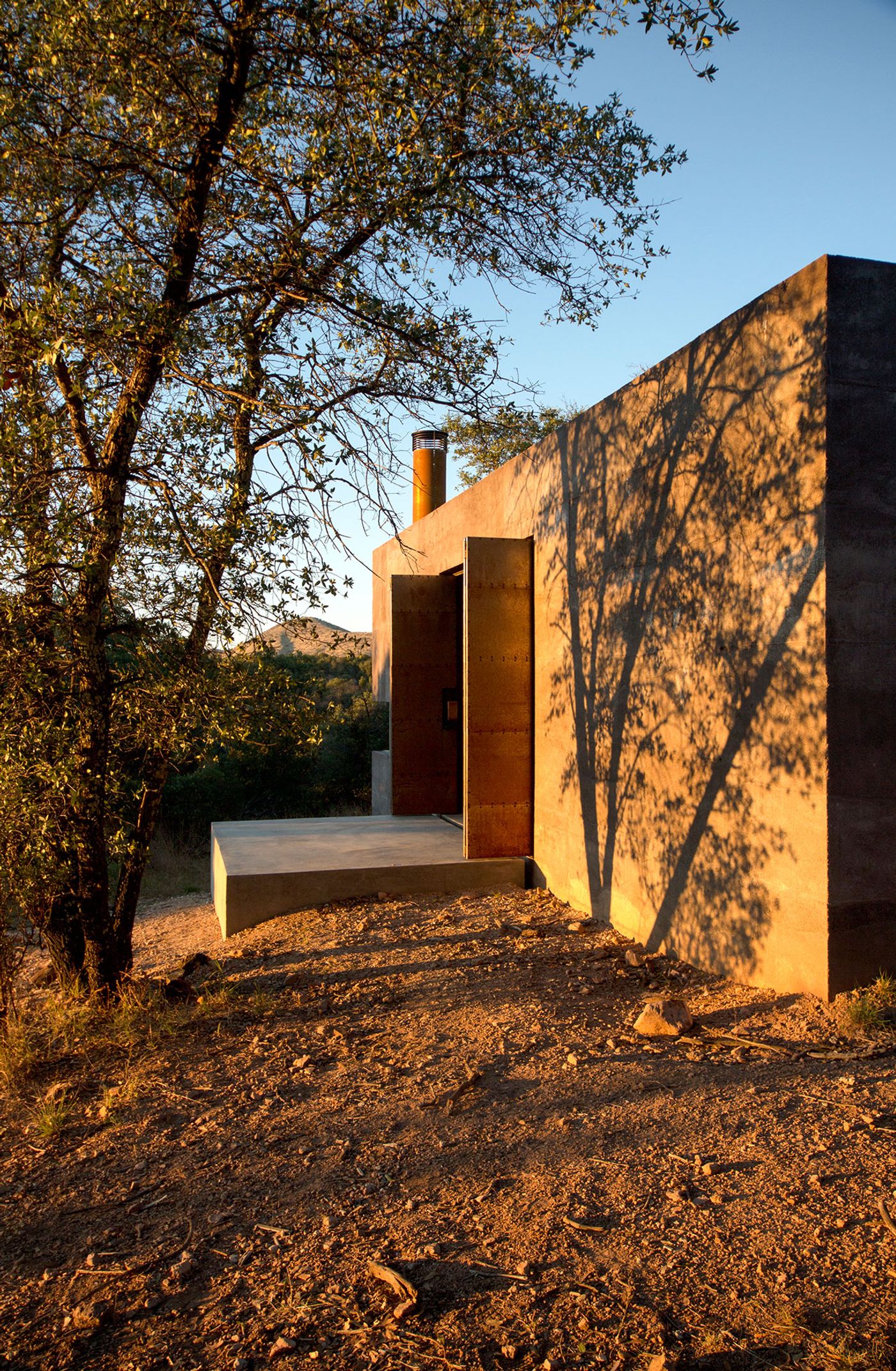
Photo by Cade Hayes.
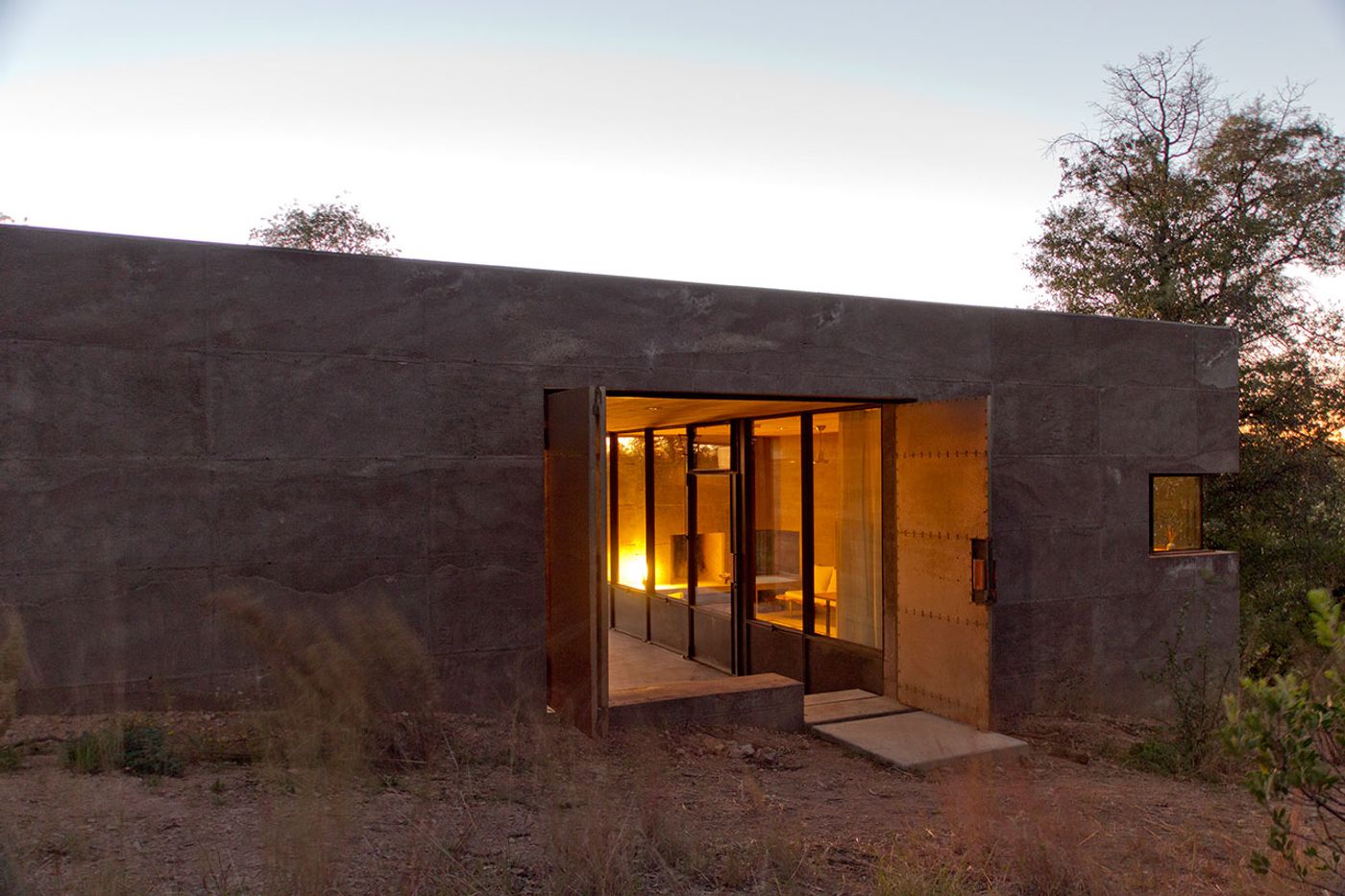
Photo by Cade Hayes.

Photo by Cade Hayes.